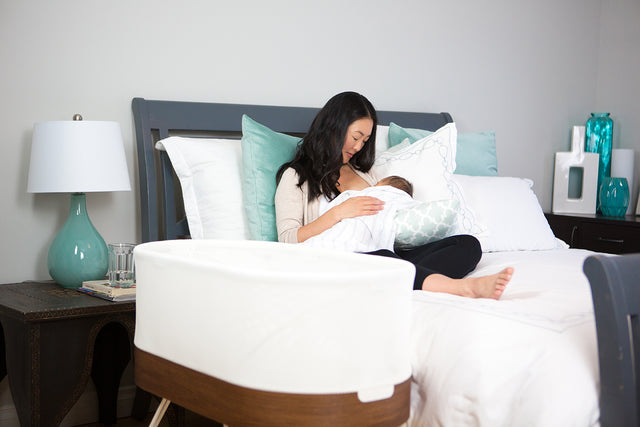5 Ways SNOO Supports Parents' Wellbeing

At Happiest Baby we’re not just about helping babies thrive…we’re here to support the whole family. Getting rest and feeling supported are huge contributors to a new mum or dad’s wellbeing—but in the chaotic first weeks of an infant’s life, both can be hard to come by. That’s why we created SNOO: to give families an extra pair of hands to help quiet fussing and aid babies’ sleep, all while keeping little ones in a safe sleeping position. Here’s a closer look at how SNOO supports parental wellness.
1. SNOO aids sleep.
During an internal study of more than 10,000 babies, we found that SNOO consistently and quickly aided a baby's sleep. That's because babies tend to sleep best when given calming womb-like motion and sound. You know how driving Baby in a car gets them to settle? Think of SNOO as being like driving your baby all night long (which would also help lull your baby into dreamland)—without ever having to get behind the wheel!
2. SNOO helps soothe upsets.
It’s well known that persistent fussing can seriously rattle new parents. We also know that SNOO helps with fussing. SNOO responds to a baby’s fussing with a combination of white noise and motion designed to soothe upsets. Surveys of hundreds of users how shown us that about 50% of infant fussing calms within 60 seconds of SNOO’s response. (The babies who don’t respond within 60 seconds typically require parental attention in the form of feeding, cuddling, or a nappy change.) More proof: A 2019 study found that the magical mix of rocking, swaddling, and white noise of SNOO “evoked an immediate calming response” in babies.
3. SNOO lends a helping hand.
A lack of practical support—someone to help calm the baby, make a meal, or assist in other ways—can quickly lead to a burdensome feeling that “it’s all on my shoulders.” But where families might be short on help in the form of nannies and live-in grandparents, SNOO can step in. SNOO rocks and shushes Baby through all naps/nights and responds with more stimulation when babies fuss (imitating the calming responses of an experienced caregiver). This allows new parents to feel like they have a helper…making them feel less alone and more supported.
4. SNOO gives peace of mind.
SNOO has a special anchored swaddle which makes it easy to give little ones the snug wrapping they crave without dangerous blankets. Even better: The SNOO Sack keeps babies on their backs for all nights and naps. Knowing that their precious baby is in a safe sleeping position can give a new parent great sense of relief.
5. SNOO boosts confidence.
With more sleep, less fussing, and fewer worries about Baby’s safety, parents tend to feel like they’re doing a good job meeting their lovebug’s needs. And, when a parent feels more confident and rested, they're able to better engage with and enjoy parenting. And more sleep helps a new parent feel more like themself, which contributes to overall wellbeing.
There's a reason they say it takes a village...we're so proud to be a part yours.
Have questions about a Happiest Baby product? Our consultants would be happy to help! Submit your questions here.